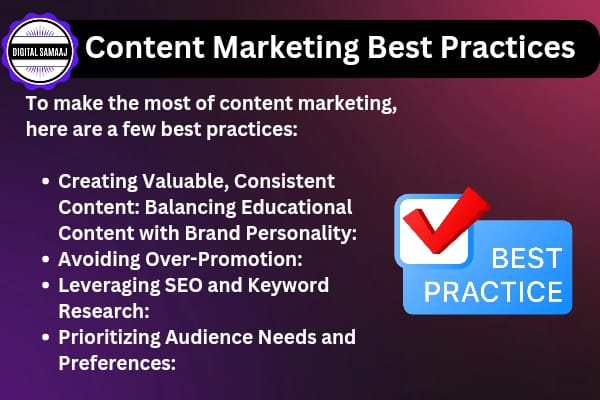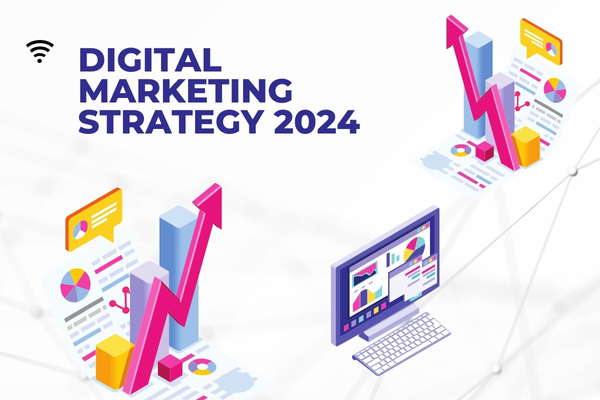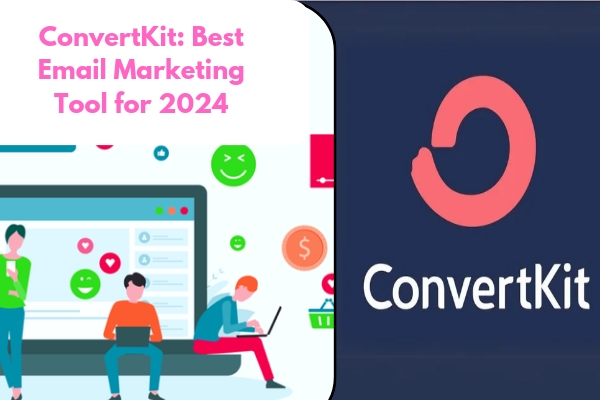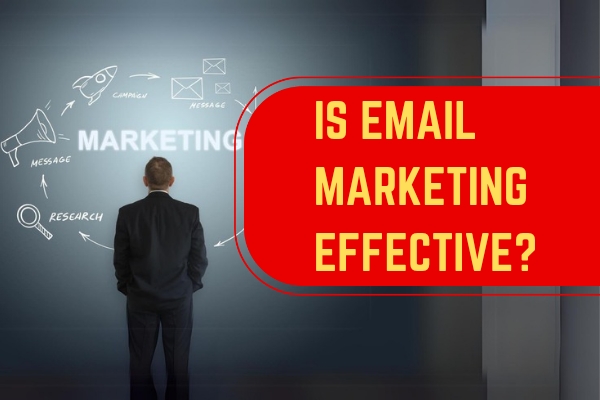Content marketing is a strategic approach focused on creating and distributing valuable, relevant, and consistent content to attract and retain a defined audience. Instead of directly promoting a product or service, content marketing offers valuable information to help the audience solve problems, make decisions, or learn more about a subject. This makes it more subtle yet powerful compared to traditional marketing, as it builds trust, creates awareness, and drives action over time.
In a digital world where ads are everywhere, content marketing stands out because it delivers real value. Modern consumers are drawn to helpful information rather than sales pitches, and content marketing allows businesses to be the source of such information.
Table of Contents
ToggleHow Content Marketing Works?

Understanding how content marketing works means looking at the Content Marketing Funnel, which involves three stages:
- Top of the Funnel (TOFU): This is where awareness happens. At this stage, content helps attract potential customers who are not yet familiar with your brand.
- Middle of the Funnel (MOFU): The focus here is on nurturing the audience. Content at this stage offers more detailed information, helping to build interest and trust.
- Bottom of the Funnel (BOFU): This stage is all about conversion. Content here is designed to encourage potential customers to make a purchase or take action.
Content marketing works by moving people through this funnel, building a relationship, and ultimately encouraging them to become customers.
The Benefits of Content Marketing

Content marketing offers several significant benefits:
- Builds Brand Awareness and Authority: When you provide valuable information, people start recognizing your brand and trusting your expertise.
- Engages and Educates the Audience: Content marketing allows you to connect with your audience, answer their questions, and offer solutions to their challenges.
- Generates Quality Leads at Lower Costs: Compared to traditional marketing, content marketing is a cost-effective way to reach people who are more likely to be interested in your products or services.
- Increases Customer Retention and Loyalty: By consistently providing helpful content, you keep your audience engaged, making them more likely to return and stay loyal to your brand.
- Improves SEO and Search Engine Rankings: With SEO-friendly content, your website can rank higher on search engines, increasing your visibility and traffic.
Key Content Marketing Statistics
Content marketing has become a critical tool for businesses. Here are some key statistics to highlight its impact:
- 81% of companies say content is essential to their marketing strategy.
- Content marketing generates 3x more leads than traditional marketing while costing 62% less.
- Companies that prioritize blogging as part of their content marketing strategy see 13x more ROI compared to those that don’t.
These stats show why content marketing is an effective choice for modern businesses looking to grow and engage with their audience.
Types of Content Marketing
There are multiple types of content marketing, and choosing the right mix can help you reach a broader audience:
- Blog Content Marketing: Blogging is one of the most popular content marketing formats. It helps educate the audience, boost SEO, and drive organic traffic.
- Video Content Marketing: Video is highly engaging, especially on social media, and is excellent for explaining complex topics or showcasing products.
- Social Media Content Marketing: Platforms like Facebook, Instagram, and LinkedIn are perfect for sharing various types of content, connecting with the audience, and fostering a community.
- Infographics: Visual content like infographics is ideal for explaining complex information in a digestible format.
- Podcasting and Audio Content: Podcasts are on the rise, allowing brands to connect with listeners while they multitask or commute.
- Email Marketing and Nurturing Flows: Email marketing helps nurture leads, keeping them updated with valuable content that guides them down the marketing funnel.
- Paid Ad Content Marketing: Paid ads allow brands to reach specific target audiences on social media and search engines.
Each type of content serves a unique purpose and appeals to different audience segments, making it crucial to find the right mix for your brand.
How to Create a Content Marketing Strategy?
Creating an effective content marketing strategy involves several steps:
Step 1: Define Your Target Audience and Buyer Personas
Understanding your audience’s interests, needs, and behaviors is essential for creating content that resonates. Buyer personas represent different segments of your audience and guide content creation.
Step 2: Set Clear Objectives and KPIs
Set measurable goals, such as increasing brand awareness or generating leads. Key performance indicators (KPIs) will help track your progress.
Step 3: Plan Content for Each Funnel Stage (TOFU, MOFU, BOFU)
Create content specific to each funnel stage. Awareness-level content is broad and informative, while decision-stage content should persuade the audience to take action.
Step 4: Choose the Right Content Types and Channels
Select the formats (blogs, videos, social media) that best suit your audience and objectives.
Step 5: Set a Budget and Content Production Schedule
Allocate resources and time for content production, whether it’s a weekly blog post or a monthly video.
Step 6: Optimize Content for SEO and User Experience
Research keywords and optimize content accordingly. Ensure the content is clear, engaging, and mobile-friendly.
Step 7: Publish, Distribute, and Promote Content
Share content across platforms like social media, email newsletters, and your website.
Step 8: Analyze Performance and Refine Strategy
Use analytics tools to monitor performance and identify areas for improvement.
Content Marketing Best Practices
To make the most of content marketing, here are a few best practices:
- Creating Valuable, Consistent Content: Consistency builds trust, while value keeps your audience engaged.
- Balancing Educational Content with Brand Personality: Infuse personality into your content to make it relatable and memorable.
- Avoiding Over-Promotion: Focus on delivering value, not just promoting your products or services.
- Leveraging SEO and Keyword Research: SEO ensures your content reaches more people and ranks better on search engines.
- Prioritizing Audience Needs and Preferences: Always consider what your audience wants and needs.
Content Marketing Tools for Success
Several tools can streamline content marketing efforts:
- Google Docs and Grammarly: Essential for content creation and editing.
- Canva: A user-friendly tool for creating visuals, infographics, and social media graphics.
- BuzzSumo: Helps find trending content ideas and analyze competitors.
- Ahrefs or SEMrush: Useful for SEO research and keyword optimization.
- Airtable: A powerful tool for organizing and scheduling content.
Using these tools can make content creation, editing, and publishing more efficient, helping you stay consistent and organized.
Content Marketing in Action: Examples
Let’s look at some successful content marketing examples:
- Blogging Success Story: HubSpot’s blog offers valuable insights on marketing, sales, and customer service, making them an authority in inbound marketing.
- Video Marketing: Hootsuite’s video campaigns are informative and highlight the value of their social media tools.
- Social Media Success: General Electric uses Instagram to showcase its innovations and human side, creating a solid connection with followers.
- Podcasting: Shopify’s podcast offers inspiring stories from entrepreneurs, adding value to their audience’s journey.
These examples show how brands use content marketing to build relationships and increase their reach.
Why Content Marketing is Cost-Effective and High-Impact?
Compared to traditional advertising, content marketing is budget-friendly and highly impactful. Once published, content can continue to attract, engage, and convert leads without ongoing costs. This “evergreen” effect means content marketing offers a long-term return on investment (ROI) and reduces customer acquisition costs. It also creates assets that compound over time, boosting your brand’s online presence and trustworthiness.
Conclusion: Is Content Marketing Worth It?
Absolutely, content marketing is worth it! It is an effective strategy that can build brand trust, generate leads, and improve SEO—all while being cost-effective. By following a well-defined strategy, using best practices, and leveraging helpful tools, you can create a powerful content marketing presence that drives growth for your business.
If you are ready to start your content marketing journey, learn more about the latest strategies, tools, and techniques at Digital Samaaj!
Access our digital marketing courses in Hindi to deepen your knowledge and skills in content marketing and digital marketing overall. Visit Digital Samaaj to start your learning journey today!
Click Here to Attend Our Free Webinar
Click Below To Share This Post With Your Friends
Tags: Content Marketing







